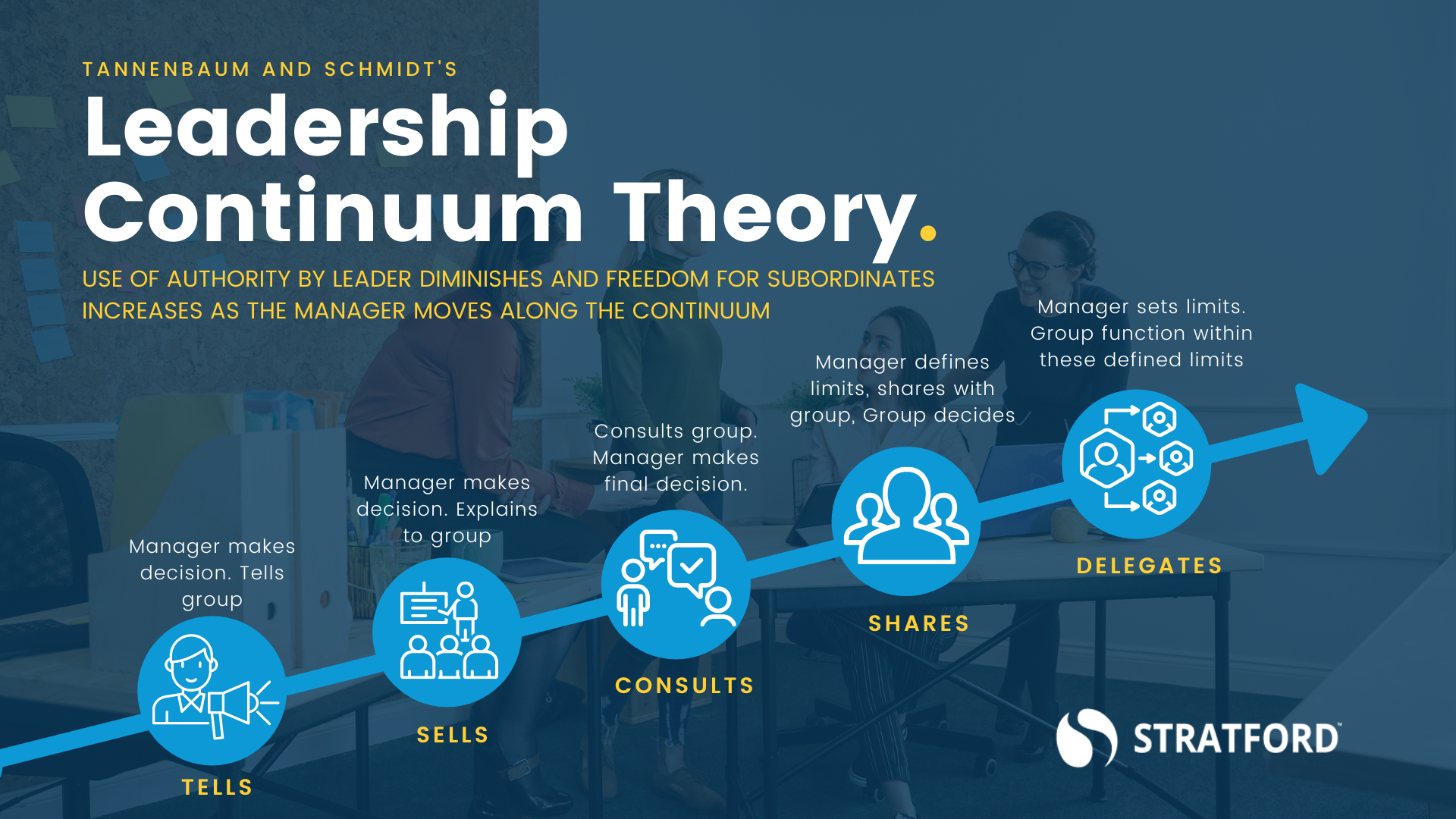The leadership continuum theory places all leadership styles along a continuum based on the balance of authority and freedom that exists between the leader and subordinates. Successful leaders will match their leadership style with the needs of their team.
What is the Leadership Continuum Theory?
Interestingly, when writing my recent blog post Where do you fall on the Leadership Continuum?, I learned about something known as the “Leadership Continuum Theory”, proposed in the 1950’s by Tannenbaum and Schmidt. Google it.
This theory says there are variations of leadership practices along a continuum that moves from an autocratic leadership style towards democratic. They do note that “real-life business management” styles most likely lie somewhere between those two extremes.
The theory goes on to describe factors that need to be assessed by a manager when deciding the leadership approach they decide to take. They need to consider themselves (experiences, personality, and background), their team (their expectations of the manager), and the situation (environmental factors).

Does your leadership style match the needs of your team?
That sounds like the challenges met every day by successful leaders, does it not? When leaders decide how they are going to help their teams to be successful, they have to make decisions and choose an approach that is authentic, meets the needs of those they lead, and ensure they deliver the value expected of them by the organization.
As we help leaders move along our leadership continuum, it is essential to facilitate increased self-awareness and mindfulness of the varied leadership approaches they apply along the way. Leaders should ask themselves (and have answers for): What was the approach I took, with whom, and what was the outcome achieved? Was this approach successful or does the approach need to be adjusted?
It was also interesting to me that critics of Tannenbaum and Schmidt’s Theory noted that determining which style to use, and when, is not clear in the model.
Ahh, yeah?!?
Folks, that is leadership. As we emphasize at Stratford Leadership Development, today’s workplace demands that leaders at all levels be able to build strong relationships with others, especially in motivating and developing employees to drive better business results.
Equip yourself not only with the best set of skills that drive greater relationships but with the ability to reflect and consider the result of your approach. Improve from there.
How to move along the continuum
Wanting to move yourself along the continuum? Ride along with us! Stratford People & Culture offers an award-winning Leadership Development program that will equip you with the tools to build your leaders up and support them wherever they are on the leadership continuum.
About Dean:
Dean Fulford brings more than 20 years of experience and a deep expertise in leadership development, organizational development and design, project management, process mapping, and best-practice benchmarking activities. With an extensive background in organization development and effectiveness, performance consulting and process improvement, Dean compliments his HR background with strong process management and competency-based project experience. Dean’s particular areas of expertise include:
- Leadership development strategy and program development
- Instructional design and facilitation; talent management program design and implementation
- Process design and project management
- Driving pragmatic, metrics-driven solutions

